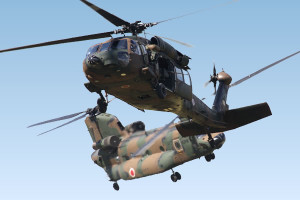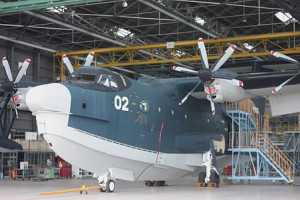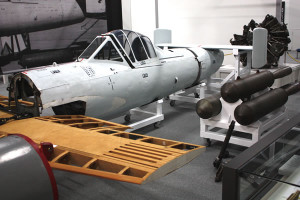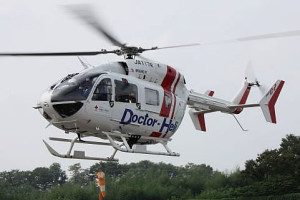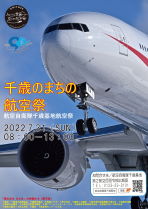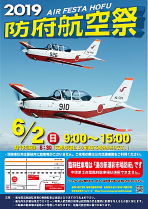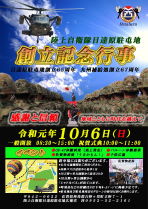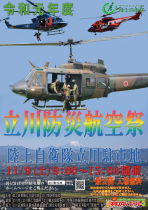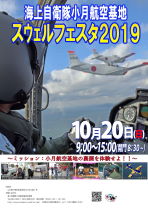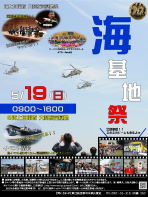JMSDF Squadron Histories & Markings Part 2
Following the pattern of the front-line squadron history pages, the following listing of JMSDF support units appears in numerical order by Fleet Air Squadron (FAS). Note that these do not include entries for the flights into which these squadrons are in some cases divided.
Fleet Air Squadron (FAS) Listing
| 51st | 61st | 71st | 72nd | 73rd | 81st | 91st |
To recap, the relevant fleet air wings (FAWs) were formed as follows:
| 21st FAW | Sept. 1, 1961 (Tateyama) | 22nd FAW | Dec. 1, 1987 (Omura) | 31st FAW | Mar. 1, 1973 (Iwakuni) |
 The seven squadrons covered on this page run from the JMSDF’s test and airlift units via what used
The seven squadrons covered on this page run from the JMSDF’s test and airlift units via what used
to be its trio of search and rescue squadrons to those engaged in special missions.
 (Photos: [top, 51st FAS P-3Cs] Atsugi, May 2002; [above, US-1A] Atsugi, May 2000)
(Photos: [top, 51st FAS P-3Cs] Atsugi, May 2002; [above, US-1A] Atsugi, May 2000)
 (Photo [81st FAS UP-2J, Iwakuni, May 1984]: Takao Kadokami)
(Photo [81st FAS UP-2J, Iwakuni, May 1984]: Takao Kadokami)
|
51st FAS |
Formed | Sept. 1, 1961 (P2V-7/S2F-1, 2nd FAW, Hachinohe) |
| Current Base | Atsugi (511th Flight [P-1/UP-1, P-3C, UP-3C]; 513th Flight [SH-60J/K, USH-60K]) |
The 51st FAS was formed primarily as an aircraft and equipment test and evaluation unit flying six P2V-7s (511th Flight) and six S2F-1s (512th Flight) with the 2nd FAW at Hachinohe in September 1961. Organized into three flights with the 514th Flight and placed under the 4th FAW on March 15, 1963, the squadron moved to Shimofusa early the following month, on April 3, 1963.
The unit also operated the T-34, presumably for liaison rather than test flights, from at least the summer of 1965 (link) to late 1981, as evidenced by this photo from December 1968 (link)
The 513th Flight was added in March 1968 to accommodate the arrival of the first helicopters, three Sikorsky HSS-2 Sea Kings and two KV107-IIs. The Tracker-equipped 512th Flight disbanded upon completion of its development work on December 20, 1971.
In the meantime, on May 14, 1970, two HSS-2 crews had narrow escapes when their aircraft came into contact during training at Shimofusa. One aircraft (8024) rolled over, destroying its main rotor, and the other (8018) belly landed, but the total of nine crew members suffered only minor injuries.
The second KV107-II3, photographed (above) during its time with the 51st, can be somewhat better seen in this image (link) from June 1968, being tested carrying an SNJ-5 (formerly 6175, marked as 3MSS-01 of the resident 3rd Service School) at Shimofusa.
Also at Shimofusa, on the last day of September 1963, the first KV107 (link) shows the overall Engine Gray colour scheme of the first two aircraft to have been the same as the Neptune in the background. Applied to the fourth aircraft when with the 51st, the by then standard two-tone colour scheme was on display, along with the unit tail marking, at a Shimofusa air show in the early 1970s (link). Just visible in that photo, but more clearly seen in these earlier images from Hyakuri in 1969 (link) and Shimofusa (date unknown [link]), is a red V-shaped marking on the nose. This may have been at least in part inspired by the Vertol Aircraft Corporation logo (below), the type being known in SDF service simply as the ba-toru (Vertol).
Back on the fixed-wing aircraft front, a bunkentai (detachment) formed at Iwakuni on June 26, 1968, for the operational testing of the PS-1. This disbanded on March 31, 1983, its aircraft being transferred to the 31st FAS. Fortunately, the two PS-1 accidents suffered by the detachment resulted in no loss of life.
 (Above) A PS-1 from the 51st FAS Iwakuni Detachment in flight with its magnetic anomaly detection
(Above) A PS-1 from the 51st FAS Iwakuni Detachment in flight with its magnetic anomaly detection
(MAD) boom extended over its home base in May 1972. This the second aircraft bears the jet black
(originally Insignia Blue) height mark crosses on the forward fuselage and tail carried as
photo reference points during sea testing with the 51st FAS Detachment.
(Below) Likewise marked with crosses, the first PS-1 is seen here in May 1971. 5801 was delivered
to the JMSDF on August 10, 1968, but was destined to be lost with all hands in an
accident at Iwakuni, when assigned to the 31st FAS in April 1983.
(Photos: Takao Kadokami)

| 51st FAS Iwakuni Det. PS-1 Accidents | ||
| Date | Serial | Location/Notes |
| Jan. 22, 1976 | 5805 | Out at sea, 50km east of Nobeoka, Miyazaki Pref. Crashed on takeoff, having capsized due to a wingtip float failure. Aircraft towed 200km to Iwakuni |
| Jan. 20, 1978 | 5811 | Badly damaged in heavy sea landing in Kii Channel, capsized and sank while being towed back to Iwakuni |
 In October 1976, a 51st FAS P-2J (above) and HSS-2A (below) at Shimofusa, the unit’s home base
In October 1976, a 51st FAS P-2J (above) and HSS-2A (below) at Shimofusa, the unit’s home base
from April 1963 to October 1981. (Photos: Takao Kadokami)

 One of the more unusual aircraft flown by the 51st FAS was the Variable Stability Aircraft (VSA), a
One of the more unusual aircraft flown by the 51st FAS was the Variable Stability Aircraft (VSA), a
Kawasaki-modified P2V-7 that was used to evaluate fly-by-wire technologies from 1978 to 1980.
The aircraft then formed part of the test pilot courses until withdrawn from use in 1982.
(Photo [Iwakuni, May 1978]: Takao Kadokami)
Placed under the direct control of the Fleet Air Force from July 29, 1969, the main element of the 51st was relocated to its current base of Atsugi on October 31, 1981. Imported from the United States, the first three JMSDF Lockheed P-3C Orion’s arrived at Atsugi for initial testing and evaluation by the 51st FAS on Christmas Day that same year.
 An early-build 51st FAS P-3C landing at Atsugi in January 1983. (Photo: Takao Kadokami)
An early-build 51st FAS P-3C landing at Atsugi in January 1983. (Photo: Takao Kadokami)
At the time of a visit by the now defunct Air World magazine in June 1998, the 51st’s flying units comprised the 511th Flight, conducting testing on three Orion variants (P-3C, UP-3C. UP-3D), and the 513th Flight, which at that time flew the HSS-2B Sea King and SH-60J. These flights remain operational and divided between current fixed-wing patrol and helicopter types today.
 This HSS-2B was still on active duty with the 51st in May 2003. Way before, in September 1970,
This HSS-2B was still on active duty with the 51st in May 2003. Way before, in September 1970,
HSS-2 8016 had been seen sporting the squadron marking on its sponson (link), and HSS-2B 8097
took part in events at Atsugi in April 1994 (link). (Photo: Ken Fielding via Wikimedia Commons)
 Although not wearing any tail markings, this HSS-2B at Tateyama in October 2002 was
Although not wearing any tail markings, this HSS-2B at Tateyama in October 2002 was
at that time assigned to VX-51.
 Taken in the late 1980s, the above photo shows what was by then XSH-60J 8201, the first of two
Taken in the late 1980s, the above photo shows what was by then XSH-60J 8201, the first of two
S-70B-3s imported with U.S. civil registrations by a trading company for conversion.
This photo (link) was taken at Nagoya in February 1986, so soon after what was then
still an SH-60B-3 had completed its first hovering test on January 21 and flight on
January 27. Naturally assigned to the 51st, the same aircraft is seen here (link)
in flight, also at Nagoya, in October 1987. (Photo: JMSDF)
 Although not the best quality, this photo does at least unusually show the pristine first MH-53E
Although not the best quality, this photo does at least unusually show the pristine first MH-53E
during its time with the 51st in late 1989, complete with an HSS-2B chase aircraft. (Photo: JMSDF)
51st Fleet Air Squadron Helicopters, Atsugi, May 2000
 (Above and below) As one of the last of the 84 HSS-2Bs built, 8158 would have been a veteran with
(Above and below) As one of the last of the 84 HSS-2Bs built, 8158 would have been a veteran with
more than 20 years’ service in 2000. The type’s narrow, boat-shaped hull contrasted with that of
wider, standard fuselage of its roomier successor. Another feature on the Sea King was the
fitting of flotation devices on the outside of the sponsons to give the crew more time to
evacuate the aircraft in the event of a ditching.
 (Photos: J-HangarSpace)
(Photos: J-HangarSpace)
 The 51st has been flight testing with production SH-60Js since August 1991. The aircraft
The 51st has been flight testing with production SH-60Js since August 1991. The aircraft
(above) on display at Atsugi in May 2000 bore a fuselage marking proclaiming the
513 Flight Unit of VX-51as the pioneering MIGHTY FLT.
51st Fleet Air Squadron Helicopters, Atsugi, May 2002
 Both of the static display helicopters at the 2002 event carried an
Both of the static display helicopters at the 2002 event carried an
unusual marking on their rotor masts.
 In the year before the type was decommissioned, HSS-2B 8153 was flying the
In the year before the type was decommissioned, HSS-2B 8153 was flying the
JMSDF’s traditional rising sun naval ensign.
 (Photos: J-HangarSpace)
(Photos: J-HangarSpace)
 Staying with the theme and possibly as a joke, SH-60J 8272 bore the international maritime signal
Staying with the theme and possibly as a joke, SH-60J 8272 bore the international maritime signal
flag Z for Zulu that, when flown singly by a ship, means ‘I require a tug’.
 Although the HSS-2B’s tail assembly folded flush with the right side of the fuselage,
Although the HSS-2B’s tail assembly folded flush with the right side of the fuselage,
that of the SH-60J was designed to fold to the left.
 A 51st FAS SH-60J participates in the ongoing testing of the Mitsubishi Type 97 short-range
A 51st FAS SH-60J participates in the ongoing testing of the Mitsubishi Type 97 short-range
torpedo, which has been in service since 1997. The P-3C and P-1 as well as suitably
equipped surface vessels are also capable of launching this weapon.
(Photo: Japan Ministry of Defense/JMSDF)
 Somewhere in the Pacific Ocean, November 14, 2006. A U.S. Navy sailor directs the pilots
Somewhere in the Pacific Ocean, November 14, 2006. A U.S. Navy sailor directs the pilots
of SH-60J 8228, which was then assigned to the 51st FAS, on the flight deck of
USS Kitty Hawk (CV-63) during the major exercise, ANNUALEX.
(Photo: U.S. Navy/Mass Communication Specialist 3rd Class Jarod Hodge)
The same aircraft had been photographed at its Atsugi base about two weeks before (link) (link).
 The change of SH-60J colour schemes in the 51st; 8245 (above) still partly in “navy whites” at
The change of SH-60J colour schemes in the 51st; 8245 (above) still partly in “navy whites” at
Atsugi in November 2010, and 8265 (below) at Yokota in August 2012.
 (Photos: Ken H via Wikimedia Commons)
(Photos: Ken H via Wikimedia Commons)
 (Photo [Oct. 2014]: Andy Binks)
(Photo [Oct. 2014]: Andy Binks)
The unit will have raised its profile outside Japan following the deployment of one of its P-1s to Djibouti for operational testing via the United States and the Royal International Air Tattoo in the UK in July 2015.
Over the years, the 51st has also been given additional responsibilities, resulting in the formation of more than 30 sections, including those conducting investigational research, providing training guidance and running test pilot courses. From the flight operations standpoint, the unit is naturally called upon to contribute to relief operations when such pressing needs arise.
| Dates Initial Aircraft Assigned to 51st FAS | |||||
| P2V-7 | Sept. 1, 1961 | P2V-7 VSA | 1978 | UP-3C | Oct. 13, 1995 |
| S2F-1 | Sept. 1, 1961 | HSS-2B | Dec. 15, 1979 | UP-3D | Mar. 5, 1998 |
| P-2J | Nov. 14, 1966 | P-3C | Dec. 25, 1981 | XSH-60K | June 25, 2002 |
| HSS-2 | Mar. 16, 1968 | UC-90 | 1983 | MCH-101 | Mar. 3, 2006 |
| KV107-II | Mar. 16, 1968 | T-5 | Aug. 30, 1988 | TH-135 | Dec. 2009 |
| PS-1 | June 26, 1968 | S-70B-3* | (See note) | P-1 | Mar. 29, 2013 |
| HSS-2A | Aug. 27, 1973 | MH-53E | Nov. 30, 1989 | C-130R | Nov. 14, 2014 |
| OH-6J | 1973 | SH-60J** | Aug. 26, 1991 | ||
| US-1 | Mar. 11, 1975 | UH-60J | Dec. 9, 1991 | ||
* “Green” aircraft; first aircraft ff. Aug. 31, 1987, tested by TRDI and 51st Sqn
from June 1989 to Apr. 1991
** First production aircraft
The latest aircraft to be delivered to the 51st, albeit for a brief period of pre-squadron service testing, was the last of the 10 MCH-101s. Kawasaki having announced its delivery on March 29, 2017, the aircraft had already been photographed at Nagoya with ‘51’ on its tail in late January (link) and was in service with the 111th at Iwakuni in time for the open day held in May of that year.
 The scene at Atsugi on October 12, 2021, when the 51st FAS held a photo call as one of the events
The scene at Atsugi on October 12, 2021, when the 51st FAS held a photo call as one of the events
marking five decades of operations. (Photo: JMSDF Fleet Air Force via Twitter @jmsdf_af)
51st FAS Tail Markings
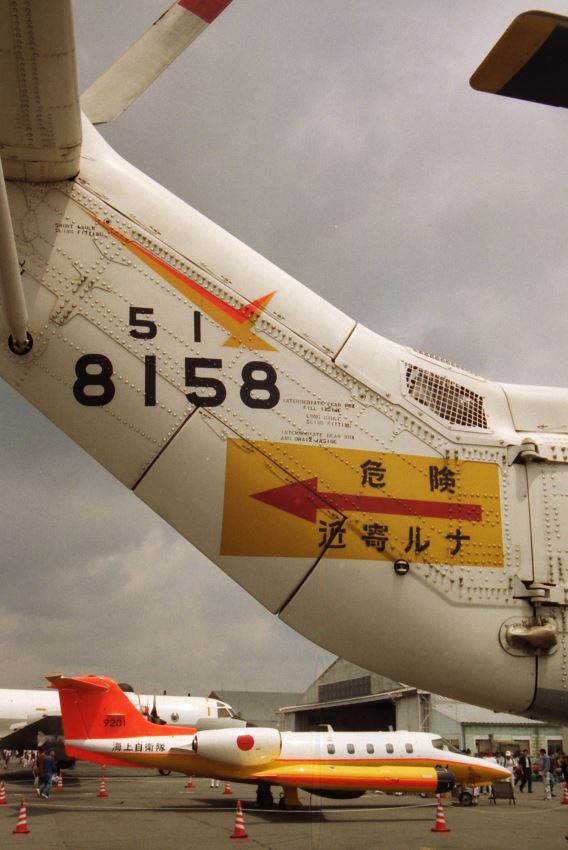 Tail marking on HSS-2B Sea King at Atsugi, May 2000
Tail marking on HSS-2B Sea King at Atsugi, May 2000
A stylized combination of an orange “V” and a yellow “X” from the unit’s U.S. Navy-style designation, VX-51, with a black “51”. (Small black squadron number only on P-1s)
 Taken from the cover of an early 1970s aviation cadet recruitment brochure, this image shows that
Taken from the cover of an early 1970s aviation cadet recruitment brochure, this image shows that
the third P-2J was then on the books with the 51st FAS. The tell-tale shape of the dark patch on
the tail reveals that the aircraft had previously been assigned to the 2nd FAS at Hachinohe.
(Photo: JMSDF)
 (Photo [Iruma, Nov. 1985]: Akira Watanabe)
(Photo [Iruma, Nov. 1985]: Akira Watanabe)
|
61st FAS |
Formed | Dec. 20, 1971 (R4D-6, YS-11M/M-A, S2F-U, under direct Fleet Air Force [FAF] command, Shimofusa, Chiba Prefecture) |
| Current Base | Atsugi (C-130R, LC-90) |
The JMSDF’s dedicated transport and miscellaneous duties squadron, the 61st’s initial equipment was handed down from the 205th ATS (two R4D-6s, two YS-11Ms and a YS-11MA) and the 51st FAS (two S2F-Us converted from standard S2F-1s). Although formed at Shimofusa, when staffed by 25 officers, 32 petty officers and 23 seamen, the unit relocated to Atsugi just four days later, on Christmas Eve 1971, and has remained there ever since.
 The first YS-11M completed its maiden flight on February 25, 1967, and was delivered to the
The first YS-11M completed its maiden flight on February 25, 1967, and was delivered to the
JMSDF on the last day of the following month. Its last flight took place on
Boxing Day 2014. (Photo taken at Atsugi, May 2000)
 The second YS-11M first flew a year later, on February 25, 1968, was delivered on March 15 that
The second YS-11M first flew a year later, on February 25, 1968, was delivered on March 15 that
year and decommissioned 46 years later, in March 2014. (Photo taken at Kisarazu, October 2012)
Based on the YS-11-100 series, the two YS-11Ms had been delivered in the same year as their first flights, 1967 and 1968, and the first 300/400 series-based YS-11M-A shortly before the 61st was formed, in November 1971. The 182nd and last YS-11 off the production line, a second YS-11M-A joined up on May 11, 1973, this differing in having had the freight door moved from the rear to the forward fuselage on the left side (link).
 (Above and below) Two earlier photos of 61st FAS YS-11s taken at Kanoya 17 years apart, in
(Above and below) Two earlier photos of 61st FAS YS-11s taken at Kanoya 17 years apart, in
April 1977 and November 1994, respectively.
 (Photos: [top] Takao Kadokami; [above] Rob Schleiffert)
(Photos: [top] Takao Kadokami; [above] Rob Schleiffert)
 One of the four S2F-1s converted to S2F-U utility standard from 1970. The conversion work
One of the four S2F-1s converted to S2F-U utility standard from 1970. The conversion work
included the removal of the radome, all anti-submarine warfare equipment and the
AVQ-2A searchlight from its underwing housing. (Photo: JMSDF)
 (Above and below) Delivered in 1958, the 60th and last Tracker to enter JMSDF service (4160)
(Above and below) Delivered in 1958, the 60th and last Tracker to enter JMSDF service (4160)
was another of the four S2F-U conversions. In the manner of the US-2Cs operated by the
U.S. Navy’s VU-5 (later VC-5), the aircraft also towed targets for ship anti-aircraft
firing practice. Seen here at Iwakuni in May 1973, the aircraft was finished in the
variant’s standard multi-coloured scheme of Engine Gray fuselage and forward
engine nacelles with yellow-orange on the horizontal wing surfaces and on the
aft section of the engine nacelles. The vertical tail and chordwise wing stripes
were painted in red-orange (International Orange). (Photos: Takao Kadokami)
(Photos: Takao Kadokami)
Following an evaluation of the conversion by the 51st FAS, the 61st operated a total of four S2F-Us for operations that included target-towing. The R4D-6s were retired in March and on October 30, 1972, during which time the third S2F-U was provided. The fourth and final S2F-U followed on March 31, 1973, and continued in service until the last of the type (9153) was decommissioned on August 31, 1981.
At a time when the Tracker was disappearing from frontline units, two converted to S2F-C transport standard were taken on strength, the first on October 22, 1974, the second in the following year. Passed to the 31st FAS around 1978, these saw something like six more years of service before themselves being decommissioned in the early 1980s.
From October to December 1979, the YS-11s were operated from Shimofusa and the Trackers from Kanoya while the Atsugi runway underwent repairs.
 Used in the transport role from 1978, the JMSDF’s two S2F-C conversions had Insignia White upper
Used in the transport role from 1978, the JMSDF’s two S2F-C conversions had Insignia White upper
and Gull Gray lower surfaces. Not only the colour scheme but also the conversion work involved
was essentially the same as that of and for a U.S. Navy US-2B. Unlike the S2F-Us, the –Cs
retained their arrestor hooks, but note that the searchlights had also been removed. They
still bore their ‘61’ unit tail codes for a time even after their transfer to the 31st FAS.
 (Photos: [top] JMSDF; [above, at Atsugi, Aug. 1978]: Akira Watanabe)
(Photos: [top] JMSDF; [above, at Atsugi, Aug. 1978]: Akira Watanabe)
Capable of carrying two crew and six passengers and offering somewhat more in the way of comfort than a Tracker, a B-65 (B65 Queen Air) was repurposed from navigation training with the 202nd Air Training Sqn to the personnel transport/liaison role in 1980, while the main transport mission continued to be fulfilled by the four YS-11M/M-As. Easier maintenance and operational improvements came as a result. B-65 6704 was still with the 61st when decommissioned in October 1983.
A further step-up in performance and comfort came with the arrival of the first of five C90B King Air-based LC-90 turboprop liaison aircraft in 1988, a version of the TC-90s that had already been selected to follow on from the B-65s in the navigation training role.
The 61st’s remit covers the scheduled airlift of JMSDF personnel and materiel to the service’s bases throughout Japan, from Hachinohe in the north and Naha in the south to the triangular atoll that is the Minamitorishima (Marcus Island) military/scientific outpost in the east.
The “milk run” scheduled services then operated by the 61st from Atsugi could be broadly divided into five regular services, serving Okinawa, Iwakuni, the Ogasawara Islands and Kisarazu as well as Hachinohe.
Okinawa: (Mondays) Atsugi → Tokushima → Omura → Kanoya → Naha (retracing those steps on Tuesdays); (Thursdays) Atsugi → Tokushima → Iwakuni → Omura → Kanoya → Naha (returning on reverse route, missing out Tokushima, Fridays)
Iwakuni: (Mondays) Atsugi → Shimofusa → Tokushima → Iwakuni → Atsugi; (every other week) Atsugi → Shimofusa → Tokushima → Ozuki → Iwakuni → Atsugi
Ogasawara Islands: (Tuesdays) Atsugi → (1,240km) Iwo To → (1,280km) Minamitorishima (returning on reverse route Wednesdays) and a weekly service
Kisarazu: Return flights from Atsugi by LC-90 (Wednesdays and Fridays)
The two legs to Minamitorishima being roughly equidistant, at the limit of the YS-11’s range and offering no alternate landing fields, there were cases of flights turning back when the weather changed. Replacement crews would also be night stopped on Minamitorishima. The milestone of having transported 800,000 personnel was passed in August 1995, and in mid-1996 the average number of personnel carried in a year was 37,000 along with 550 tons of freight.
Extensively damaged in a runway overrun accident at Ozuki on September 28, 2009 (as seen here, six days after the incident [link]), one of the YS-11M-As was officially struck off charge the following July.
The already apparent limitations of the JMSDF’s airlift capabilities also greatly inhibited the service’s ability to respond in the aftermath of the Great East Japan Earthquake of March 2011 and at the same time drastically reduced the available airframe flight hours on the three remaining YS-11M/M-As. In mid-October 2011, the decision was taken to acquire not jet aircraft, as had long been surmised (at one stage the use of Kawasaki C-1s had been examined), but six Hercules under a foreign military sales (FMS) contract with the U.S. Navy. These were former U.S. Marine Corps KC-130Rs that would be refurbished and have their refueling equipment removed, prompting the change of designation to C-130R.
 The serials of the six C-130Rs, 9051 to 9056, exactly match those assigned to and worn by the UF-2
The serials of the six C-130Rs, 9051 to 9056, exactly match those assigned to and worn by the UF-2
Albatross amphibians in the 1960s and 70s. (Photo [Jan. 2019] : JMSDF/Air Transport Squadron 61)
Built in the mid-1970s to a U.S. Air Force contract, all six had been passed to the U.S. Marines and previously seen service from MCAS Futenma in Japan with VMGR-152, at various times and in three cases for extended periods, from the mid-1990s to the latest 2008. Since the mid-2000s, all had gradually been placed in storage at the Aerospace Maintenance and Regeneration Center (AMARC) at Davis-Monthan AB in Arizona.
Undertaken at the Ogden Air Logistics Complex (OO-ALC) at Hill AFB, Utah, on behalf of the U.S. government, the refurbishment programme commenced in February 2013 and involved structural enhancements and corrosion repair as well as the installation of glass cockpits.
The $170 million contract also covered the supply of 30 overhauled T56-A-16 engines. Classroom training courses for JMSDF flight and maintenance personnel were provided by CAE in Tampa, Florida, but the flight training course at Davis-Monthan experienced delays and started in mid-June 2014, three months after the first aircraft’s planned arrival in Japan for testing with the 51st FAS. Training on a second aircraft was conducted at NAS Patuxent River, Maryland, from that August.
The end of 2014 thus saw a major equipment transition, with the arrival of the first C-130R (albeit flown by a U.S. crew) at Atsugi on November 14 and the decommissioning of the YS-11M/M-As on December 24. YouTube footage exists of the YS-11M that visited Fukui Airport in May 2014 [link].
The first major disaster relief operations involving the C-130Rs were the Kumamoto Earthquakes in April 2016.
 A 61st FAS C-130R sits on the ramp at Iwakuni on April 20, 2016, four days after the Kumamoto
A 61st FAS C-130R sits on the ramp at Iwakuni on April 20, 2016, four days after the Kumamoto
Earthquakes. Laden with relief supplies, the aircraft had been flown from Hachinohe to Iwakuni,
which served as a logistics hub during the emergency. (Photo: Japan Ministry of Defense/JMSDF)
 (Above and below) In the aftermath of the earthquake that struck Hokkaido Prefecture in the early
(Above and below) In the aftermath of the earthquake that struck Hokkaido Prefecture in the early
hours of September 6, 2018, a 61st FAS C-130R was utilized to airlift a Yokohama-based disaster
relief team and vehicle as well as relief supplies to Chitose AB. The signs placed in the lower
cockpit windows read (left) ‘disaster relief deployment’ and ‘61st Squadron, JMSDF’. (Photos: JMSDF Public Affairs Office via Twitter @JMSDF_PAO)
(Photos: JMSDF Public Affairs Office via Twitter @JMSDF_PAO)
 (Above and below) Niigata Airport, July 2017. A line of Disaster Medical Assistance Team (DMAT)
(Above and below) Niigata Airport, July 2017. A line of Disaster Medical Assistance Team (DMAT)
personnel boards a C-130R, which takes off to take part in a training exercise.
 (Photos: のぐちゃん via Twitter @gambarumba)
(Photos: のぐちゃん via Twitter @gambarumba)
 (Photo: JMSDF Naha AB/5th Fleet Air Wing)
(Photo: JMSDF Naha AB/5th Fleet Air Wing)
More recently, the longer range of the C-130Rs has led to their involvement in the airlift of personnel assigned to the Deployment Air Force for Counter-Piracy Enforcement (DAPE) missions off the Horn of Africa. For example, the 38th DAPE mission returned from Djibouti on a C-130R and JASDF C-2 in July 2020, landing first at Narita International Airport for tests to prevent the spread of COVID-19 infections before continuing on to their base at Naha (above).
 A 61st FAS C-130R departs Minamitorishima, the island that is Japan’s easternmost point,
A 61st FAS C-130R departs Minamitorishima, the island that is Japan’s easternmost point,
1,950km from Tokyo. The introduction of the C-130R has made resupplying this far-
flung outpost far easier and more efficient than it ever was in the YS-11 days.
(Photo [undated]: JMSDF Public Affairs Office via Twitter @JMSDF_PAO)
 (Photo [Atsugi, Sept. 2016]: Josephus37 via Wikimedia Commons)
(Photo [Atsugi, Sept. 2016]: Josephus37 via Wikimedia Commons)
 A C-130R crew at the “office” (Photo: JMSDF/Air Transport Squadron 61)
A C-130R crew at the “office” (Photo: JMSDF/Air Transport Squadron 61)
 (Photo [Atsugi, June 2020]: itoy via Twitter @166696_i)
(Photo [Atsugi, June 2020]: itoy via Twitter @166696_i) (Photo [Atsugi, Mar. 2017]: Josephus37 via Wikimedia Commons)
(Photo [Atsugi, Mar. 2017]: Josephus37 via Wikimedia Commons)
 (Photo [Jan. 2019]: JMSDF/Air Transport Squadron 61)
(Photo [Jan. 2019]: JMSDF/Air Transport Squadron 61)
 As the rising sun casts fitting shadows, 61st FAS ground crew personnel see off their charges for the
As the rising sun casts fitting shadows, 61st FAS ground crew personnel see off their charges for the
traditional first formation flight training of the New Year, January 9, 2018.
(Photo: JMSDF/Air Transport Squadron 61)
61st FAS Markings
 (Photo taken at JGSDF Kisarazu, October 2012)
(Photo taken at JGSDF Kisarazu, October 2012)
Reflecting the unit’s line of work and its radio call sign, a tail marking of a camel and the name Caravan had been adopted for the YS-11s by the late 1990s, but this has not been carried over to the C-130Rs. The LC-90s have carried a small version of the camel marking forward of the left-side rear fuselage window, as just discernible in the photo below. The smaller marking was also seen on the noses of the YS-11s (link).
 (Photo taken at JGSDF Kisarazu, October 2012)
(Photo taken at JGSDF Kisarazu, October 2012)
 (Photo [Atsugi, Jan. 2018]: Japan Ministry of Defense/JMSDF)
(Photo [Atsugi, Jan. 2018]: Japan Ministry of Defense/JMSDF)
Regular inspect and repair as necessary (IRAN) maintenance checks of the C-130R fleet, which initially involve the removal of external paint, are conveniently carried out at the Atsugi plant of Kawasaki subsidiary NIPPI Corporation. As reported in the June 2020 issue of Kōkū Fan magazine, the first-delivered C-130R (9051) had appeared after such a check in March 2020, dressed not in the usual gloss blue-grey colour scheme—matching that of a conveniently passing P-1 (above)—but sporting a new matt light sky blue scheme instead. Perhaps someone had confused their FS15526 with their FS35526? The aircraft was still a riot of matt light sky blue in February 2021 (link).
Where Were They Then?
Having long been in the habit of procuring new aircraft, the acquisition of used Hercules represented a throwback to the earliest days of JMSDF. This website features Where Are They Now? pages that attempt to track the subsequent fates of SDF aircraft, but this section reverses that process and takes a look back at the long parallel pedigrees of the six C-130Rs with which the 61st FAS is currently equipped.
 U.S. Navy F/A-18 Hornets high in the skies over Oregon (above) and a U.S. Marine Corps CH-53E
U.S. Navy F/A-18 Hornets high in the skies over Oregon (above) and a U.S. Marine Corps CH-53E
Super Stallion over the Philippine Sea receive sustenance from KC-130Rs of the often Futenma-
based Marine Aerial Refueler Transport Squadron 152 (VMGR-152). This was the bread-and-
butter work environment of the six Hercules that are now serving in the pure transport role
with the JMSDF as C-130Rs. Also held in storage, the KC-130R in the photo below
(160019) must have narrowly missed out on selection for a second career.
 (Photos: [top, during Exercise Sentry Eagle, Aug. 2005] U.S. Air Force/Tech Sgt Jerry Morrison;
(Photos: [top, during Exercise Sentry Eagle, Aug. 2005] U.S. Air Force/Tech Sgt Jerry Morrison;
[above, March 2001] U.S. Navy/Photographer’s Mate 3rd Class James Davis)
 One of the ex-U.S. Marine Corps KC-130Rs destined for Japan, 160020 is seen cocooned at
One of the ex-U.S. Marine Corps KC-130Rs destined for Japan, 160020 is seen cocooned at
Davis-Monthan AFB in March 2014. Having served with VMGR-152 in Japan from 1994
to 2004 and arrived for storage in August 2005 (link), this aircraft was selected to
be the last for Japan. After emerging from its “chrysalis” in December 2014,
9056 arrived at Atsugi in October 2016. (Photo: Alastair T. Gardiner)
| 61st FAS C-130R Hercules Histories (1/2) | ||
| JMSDF Serial | c/n / USAF serial | (BuNo.) / Notes |
| 9051 | 4629/74-1656 | (160015) In Japan VMGR-152 2007 To AMARC Sept. 2007; to Ogden Air Logistics Complex (OO-ALC), Hill AFB circa Feb. 2013 Used for crew training, Davis-Monthan AFB, June 2014 (link), arrived Atsugi Jan. 16, 2015 |
| 9052 | 4635/74-1657 | (160016) Built in 1975, in Japan VMGR-152 2004, 2007 To AMARC Feb. 2008 (link); to OO-ALC circa Feb. 2013 At NAS Patuxent River Aug. 2014 (link) Ferried by U.S. Navy crew, arr. Yokota AB Nov. 13, 2014 Arr. Atsugi Nov. 14, 2014, initially flown by 51st FAS |
| 9053 | 4615/74-1654 | (160013) In Japan VMGR-152 1995 to 2008 To AMARC Jan. 2008; to OO-ALC circa Feb. 2013 Arrived Yokota AB Nov. 28, 2014 |
 One of the former U.S. Marine Corps KC-130Rs brought out of hibernation to fulfill the JMSDF
One of the former U.S. Marine Corps KC-130Rs brought out of hibernation to fulfill the JMSDF
contract, 160013 is beautifully captured on camera when landing at Davis-Monthan AFB on
February 7, 2013. That month, the aircraft was ferried to Hill AFB to initiate the process of
its conversion to C-130R standard and its ultimate change of identity to JMSDF 9053.
(Photo: Bill Word)
 For comparison with the above photo, a shot of the second C-130R (ex-160016) coming in
For comparison with the above photo, a shot of the second C-130R (ex-160016) coming in
for a landing at Atsugi. (Photo: らんでぃんぐ・ぎあ via Twitter @f_2a_hayabusa)
| 61st FAS C-130R Hercules Histories (2/2) | ||
| JMSDF Serial | c/n / USAF serial | (BuNo.) / Notes |
| 9054 | 4677/75-0550 | (160017) In Japan VMGR-152 2003, 2006 To AMARC May 2006; to OO-ALC circa Feb. 2013 Arrived Atsugi Mar. 4, 2014 |
| 9055 | 4683/75-0551 | (160018) In Japan VMGR-152, 1994 to 2002, 2004 to 2005 To AMARC Feb. 2006; to OO-ALC July 2013 Arrived Atsugi Nov. 2014 |
| 9056 | 4696/75-0553 | (160020) In USMC service by Aug. 1976 (link) In Japan VMGR-152 1994 to 2004 To AMARC Aug. 2005; to OO-ALC Dec. 2014 Arrived Atsugi Oct. 2016 |
| Note: At least two websites have the former identities shown for 9055 and 9056 transposed. | ||
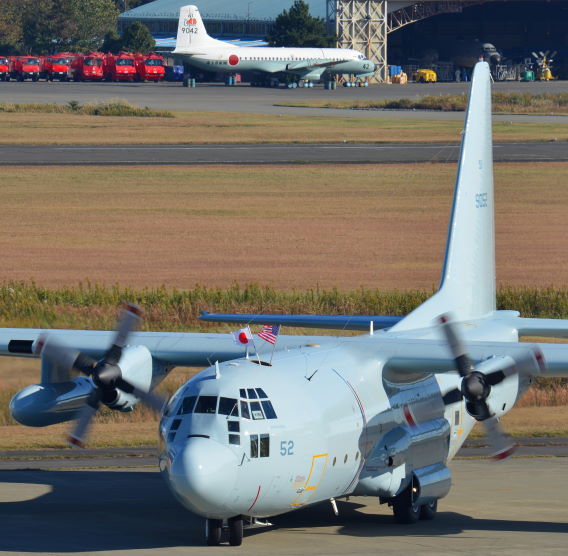 Having cleared customs at Yokota AB the previous day, the U.S. Navy crew that has ferried the
Having cleared customs at Yokota AB the previous day, the U.S. Navy crew that has ferried the
second C-130R break out the flags upon arrival at Atsugi, November 14, 2014. Meanwhile, in
the background, one of the old-guard YS-11Ms sits engineless and forlorn.
(Photo: Japan Ministry of Defense/JMSDF)
 (Photo: Japan Ministry of Defense/JMSDF)
(Photo: Japan Ministry of Defense/JMSDF)
|
71st FAS |
Formed | July 1, 1976 (31st FAW, Iwakuni, US-1) |
| Current Base | Iwakuni (US-2) |
Thanks to the nature of its work and the distinctive types of aircraft it has operated, the 71st FAS is the JMSDF squadron with the highest profile outside Japan.
Having had three US-1s and 83 personnel at the time of its formation, on July 1, 1976, the first full-scale, open-ocean mission by a US-1 took place just a few days later.
On July 12, 1976, an injured crew member was airlifted from the Greek-registered bulk carrier Regal Scout, then around 350 miles off the coast, to Tokyo-Haneda International Airport to receive urgent medical attention. The first Famous Airplanes of the World publication on the US-1, which was published in March 1977, contains details of this epoch-making operation, which can best be summarized in the form of a timeline.
 Photo [Iwakuni, May 1979]: Takao Kadokami)
Photo [Iwakuni, May 1979]: Takao Kadokami)
1140 US-1 ready crew gathers in briefing room. The duty officer had received a telephone call giving initial details of the accident on board the Regal Scout (an officer had suffered severe cuts to his left wrist). Bound for Onahama, Fukushima Prefecture, the ship’s location is 350 miles east of Choshi, Chiba Prefecture, in other words a distant 720 miles east of Iwakuni.
As pilot Lt Cdr Nishijima is added as pilot in command and a navigator as rear cabin commander to the 11 members of the ready crew, the specially deployed crew totals 13 members and is to head initially for Atsugi. In overall command of the operation from Iwakuni is Commander Okada, the 71st’s CO.
1200 Engine start on US-1 9071, departure
En route, in the vicinity of Kowa on the Chita Peninsula in Aichi Prefecture at a true air speed of 230kt, a signal is received that orders Nishijima to change course and proceed directly to the vessel’s last known position. A 3rd FAW P-2J (4751) has been rapidly sent to the scene from Atsugi, and a 31st FAS PS-1 (5809) launched to assist in the rescue effort.
The crew makes preparations for a landing and rescue operation on the ocean, but it is clear from the in-flight conversation that they remain a little nervous because this is the first rescue deployment.
1516 Arrival over an adrift Regal Scout. Careful assessments are made of the wind speed and direction, wave heights and lengths, and the direction of swell. Whether the crew of the Regal Scout understands what are likely one-sided radio communications is debatable. Be that as it may, after having decided on a landing point 150 to 200m off the ship’s starboard side, a single low pass is made at a very low altitude to confirm the conditions at sea level.
1535 Landing, after a flight that has lasted 3 hours and 18 minutes. The rescue boat is deployed and, after Nishijima has confirmed that the aircraft’s hull has not received any unexpected damage, heads towards the ship with two on-board rescuers at the helm.
 (Photo [undated]: Japan Ministry of Defense/JMSDF)
(Photo [undated]: Japan Ministry of Defense/JMSDF)
Due to the swell, there had been some concern about whether it would be possible to come alongside and transfer to the ship, but Nishijima manages to board the Regal Scout safely using a long rope ladder deployed from the upper deck.
Approximately 20 minutes later, a group of ship’s crew members gathers starboard amidships near the rope ladder. From among them, Nishijima descends the ladder and transfers to the rescue boat. The patient, who seems to have been rolled up in a blanket on a stretcher with strings at both ends, is lowered over the side and accommodated in the boat, which returns to the aircraft.
Due to the rudimentary first aid carried out on board the ship, drops of blood fall onto the floor of the aircraft’s recovery cabin. After laying the patient on the bed and confirming that the rescue boat has been securely stowed, the crew immediately switches to takeoff preparations.
1618 Safe takeoff from a point in the middle of the Pacific Ocean, destination Haneda. The efforts of the on-board paramedic succeed in staunching the blood.
1710 The paramedic thinks that the patient might still be in a state of shock, so requests that they land as soon as possible. As the US-1 proceeds at full power at an indicated airspeed of 230kt, the feeling is that every second counts.
1800 “Rescue Ivory 71” lands at Haneda after having received permission for a straight-in approach.
Since 9071 was the only US-1 that had not yet had ILS equipment fitted, there had been concerns that the flight crew would have to request a ground-controlled approach for the let-down into Haneda. Having been IMC up to that time, the weather had changed to VMC, and the US-1 had fortunately been able to land unaided.
The flight crew does receive guidance along the complicated airport taxiways, as the US-1 is brought around to the Japan Coast Guard apron, where the patient is transferred to a waiting ambulance.
1810 Mission accomplished, US-1 9071 and its elated crew depart for Atsugi.
 (Photo [undated, US-1A]: Japan Ministry of Defense/JMSDF)
(Photo [undated, US-1A]: Japan Ministry of Defense/JMSDF)
Providing round-the-clock cover, the 71st FAS added a rotating detachment of up to two aircraft at Atsugi from March 26, 1982, when a total of seven aircraft were in service. This move served to reduce the response times needed for incidents out in the Pacific Ocean and also over in the Sea of Japan. In 1983, a request to airlift a patient from the Ogasawara Islands for treatment in Tokyo was the 100th emergency airlift mission. The unit’s operations from the Ogawasara (Bonin) Islands, 620 miles (1,000km) to the south of and administered by Tokyo, are limited to the harbour of the main island of Chichijima. (Any patients from the Hahajima group of islands have to be transported to the mainland by JMSDF helicopter via Iwo To. Chichijima and Hahajima have both had night helicopter landing facilities since the early 2000s.)
From the seventh aircraft, which was delivered in March 1982, newly built aircraft were to US-1A standard with uprated engines, and five of the first six were progressively upgraded to -1A standard from September 1981 to January 1986.
The punishment meted out to the US-1A airframes in open ocean operations meant that their service lives would be comparatively short. The first of the replacement US-2s having entered service with the squadron on March 30, 2007, the 71st continued to operate both types, with pilots checked on one type only, until the last US-1A was decommissioned in December 2017.
In the meantime, the 1,000th rescue mission had been successfully completed 38 years almost to the day since the squadron’s formation, on July 8, 2014.
Around 1620 on the previous day, a male sailor on board a fishing vessel located 1,130 km east of Kinkazan, Miyagi Prefecture, had started to complain of severe abdominal pain. Following medical advice that judged urgent medical examination necessary, the ship made a request for assistance to the Japan Coast Guard’s local 2nd Regional HQ. In view of the distance and time factors involved having been passed the request at 2325, the JMSDF initiated a rescue mission, which unfolded in textbook manner as follows:
July 7, 2004/2357 4th Air Wing P-3C takes off from Atsugi
July 8/0026 Captained by instructor pilot Lt Cdr Shōtarō Mori, US-2 9905 takes off, arrives overhead the fishing vessel before dawn
0415 Patient secured on board the US-2, takes off at 0438
0757 P-3C lands back at Atsugi, followed by US-2 at 0814
0832 Patient transferred to waiting ambulance
Having come to the end of their Atsugi detachment, US-2 9905 and its 15-man flight and support crew returned to their Iwakuni home base on July 11, where 500 people attended a ceremony held to mark the passing of the operations milestone. At that time, a total of seven US-1As and US-2s were operational. According to a breakdown supplied to the media by the 31st Fleet Air Wing, those 1,000 rescue missions included 759 involving the airlift of emergency cases from the ocean or remote islands, 165 rescues on the high seas and 13 searches for ships in distress.
 (Above and below) Scenes from the events held at Iwakuni on July 11, 2014, to
(Above and below) Scenes from the events held at Iwakuni on July 11, 2014, to
mark the unit having reached the 1,000th rescue mission milestone three days before.
 (Photos: [top] Japan Ministry of Defense/JMSDF; [above] JMSDF Iwakuni AB)
(Photos: [top] Japan Ministry of Defense/JMSDF; [above] JMSDF Iwakuni AB)
Kept in a state of readiness at all times, a US-2 is capable of taking to the air within an hour of an accident or other incident at sea, in about 30 minutes if its main engines are in start-ready condition. On average, the 71st conducts around 30 to 40 SAR and disaster relief operations a year.
Episodes in 71st FAS Operations
June 15, 1982 During takeoff and landing training off the coast of Cape Ashizuri, Kochi Prefecture, the left wing float of 9074 broke off upon landing. The aircraft was towed back to Iwakuni by the destroyer Nagatsuki, which happened to be in the vicinity.
Jan. 23, 1992 US-1A 9081’s crew, led by pilot Cmdr. Hideki Kida, rescue a Misawa-based U.S. Air Force F-16 pilot who had ejected 630 nautical miles east of Tokyo after having been struck from below by a KC-135 tanker. Pilot Capt John L. Dolan had been in the water for five hours at the time of his rescue, which was courageously carried out under the most demanding of conditions.
Having risen to the rank of lieutenant general and been placed in command of U.S. Forces Japan and the 5th Air Force in 2015, Dolan made a point of visiting 71st personnel when on a visit to Iwakuni in September that year. Still serving with the unit 23 years later were the flight engineer Warrant Officer Fumio Ootaki, who had then been on his very first rescue mission, and chief petty officers Yukihiro Kamouchi and Noriaki Tazaki.
February 1994 US-1A 9080 used to fly the then Emperor Akihito and Empress Michiko to a ceremony marking 50th anniversary of Battle of Iwo To (Iwo Jima).
January 1995 Airlift of people affected by the Hanshin-Awaji (Kobe) Earthquake and disaster relief supplies
Feb. 21, 1995 Tragedy strikes as only one of the 12 crew members on board US-1A 9080 survives when the aircraft capsizes on landing off Okinoshima, in the Bungo Channel that separates Shikoku from Kyushu.
March 8, 2009 In first mission by a US-2, the crew of 9902 airlifts to the mainland a man injured when his boat capsized off Minamitorishima.
July 2009 US-2 9902 participates in first ASEAN Regional Forum Disaster Exercise, which is conducted in the Philippines.
March 2011 Conducts disaster relief airlift and coastline search operations from Sendai Airport and Matsushima AB in aftermath of Great East Japan Earthquake and tsunami
July 2011 Participates in international fleet review in Brunei
 71st FAS pilots play follow the leader during their flight demonstration at the JMSDF Iwakuni
71st FAS pilots play follow the leader during their flight demonstration at the JMSDF Iwakuni
base festival. (Photo [Sept. 18, 2011]: MCAS Iwakuni/Lance Cpl Charles Clark)
 Having been deployed on rescue missions on 27 occasions in 2012, the 71st Sqn sent a US-2
Having been deployed on rescue missions on 27 occasions in 2012, the 71st Sqn sent a US-2
(shown here) and a US-1A on an SAR training exercise for its traditional first flight of the New Year. The standard crew complement of both aircraft is at that time 11, comprising two pilots, an SAR
The standard crew complement of both aircraft is at that time 11, comprising two pilots, an SAR
coordinator, two on-board maintenance personnel, three divers, two paramedics and
a sensor operator (above).
 The then CO Shinji Nakahara informed the U.S. Marine Corps reporter (in the background in
The then CO Shinji Nakahara informed the U.S. Marine Corps reporter (in the background in
above photo) that the aircraft is capable of carrying approximately three tons (6,000 pounds)
of supplies or 30 passengers or 11 flat beds. When the need arises, medical personnel
are also able to conduct conduct surgical operations on board the aircraft.
(Photos [Jan. 8, 2013]: U.S. Marine Corps/Lance Cpl. Todd F. Michalek)
 En route to the simulated training location, the US-1A that accompanied the US-2 on the
En route to the simulated training location, the US-1A that accompanied the US-2 on the
first flight of 2013. (Photo [Jan. 8, 2013]: MCAS Iwakuni/SSgt Vanessa Jimenez)
June 23, 2013 The 71st makes headlines by rescuing TV news anchor Jirō Shinbō and well-known visually impaired sailor Mitsuhiro Iwamoto from a life raft, their yacht having sunk while attempting to cross the Pacific. Weather conditions force the sending of two aircraft to their assistance (link).
Apr. 28, 2015 US-2 9905 involved in a fortunately non-fatal accident when landing on the sea off Cape Ashizuri, Kochi Prefecture. (Aircraft sinks May 1, wreck salvaged.)
Dec. 7, 2016 Following a massive air and sea search, to a US-2 crew falls the sad duty of recovering the body of U.S. Marine Corps pilot Capt Jake Frederick. For reasons that will never be fully known, Capt Frederick had ejected when flying at night as one of a pair of F/A-18 Hornets off the coast of Tosashimizu, Kochi Prefecture.
 Destined to be the last to be decommissioned in December 2017, the last-built US-1A
Destined to be the last to be decommissioned in December 2017, the last-built US-1A
performs at the MCAS Iwakuni Friendship Day that same year.
(Photo [May 5, 2017]: U.S. Marine Corps/Cpl. Aaron Henson)
Dec. 13, 2017 Decommissioning Ceremony for Last US-1A
 The last flight, with which 8090 reached its maximum 5,400 airframe flying hours, was manned by
The last flight, with which 8090 reached its maximum 5,400 airframe flying hours, was manned by
14 under Commander Shigeru Takemori. At the time, the 71st Sqn’s mission tally stood at
1,036, broken down to US-1 81, US-1A 827 and the US-2 128. (Photo: JMSDF Iwakuni)
 A US-2 flies over the city of Iwakuni’s landmark Kitai Bridge during a comprehensive disaster
A US-2 flies over the city of Iwakuni’s landmark Kitai Bridge during a comprehensive disaster
preparedness drill. The crew was receiving training in earthquake damage assessment and
information gathering. (Photo: [June 9, 2019]: Japan Ministry of Defense/JMSDF)
 US-2 pilot Lt (jg) Megumi Okada conducts her first training mission as pilot in command, thereby
US-2 pilot Lt (jg) Megumi Okada conducts her first training mission as pilot in command, thereby
becoming the first Japanese woman to command a JMSDF amphibious aircraft. A short NHK news
video (link) shows the flight and Okada undergoing the traditional post-flight ritual. By this time,
the 71st’s total rescue mission tally had risen to 1,043. (Photo [July 1, 2019]: JMSDF Iwakuni AB)
September 7–8, 2019 Red Bull Air Race
 A US-2’s presence at this event, held at the Makuhari Seaside Park in the Mihama district of
A US-2’s presence at this event, held at the Makuhari Seaside Park in the Mihama district of
Chiba City, marked the first occasion on which a US-2 had landed in Tokyo Bay.
(Photo: 乾物屋 [Kanbutsuya via Twitter @KanbutsuyaSan)
Jan. 31 to Mar. 6, 2020 Exercise Cope North Guam
 Photographed en route to Andersen AFB on Guam, the US-2 that participated in the Cope North
Photographed en route to Andersen AFB on Guam, the US-2 that participated in the Cope North
trilateral training exercise in early 2020. Participating for the first time, the 70-strong 71st Sqn
contingent was led by the CO, Commander Yoshihide Shōji. (Photo: JMSDF Public Affairs Office)
[See Bulletin Board entry for January 31 to March 8, 2020]
 (Photo [Andersen AFB, Guam]: Japan Ministry of Defense/JMSDF)
(Photo [Andersen AFB, Guam]: Japan Ministry of Defense/JMSDF)
 The then Japan Defense Minister Tarō Kōno tries the captain’s seat of a US-2 for size during a visit
The then Japan Defense Minister Tarō Kōno tries the captain’s seat of a US-2 for size during a visit
to Iwakuni, during which he paid his respects and laid a wreath at the 31st Fleet Air Wing memorial
to the 62 who have lost their lives in the line of duty. Two months later, the 71st flew Minister of
the Environment Shinjirō Koizumi to Minamitorishima. The sign is welcoming him to the
island that is Japan’s easternmost point.
 (Photos: [top] June 20, 2020: [above] Aug. 23, 2020; JMSDF Iwakuni)
(Photos: [top] June 20, 2020: [above] Aug. 23, 2020; JMSDF Iwakuni)
The Joint Air Staff Office posted a two-minute video of a US-2 mission conducted on July 14, 2022 (link). Shortly before midnight the day before, the Japan Coast Guard requested JMSDF assistance in airlifting a sick crewman from a Japanese-registered trawler, then located approximately 1,000 km (540 nautical miles) east of Iwo To, the mission’s ultimate medevac destination.
| Shin Meiwa US-1 Production List | |||
| Aircraft Serial | Delivery Date | As US-1A | Decommissioned |
| 9071 | Mar. 11, 1975 | Sept. 4, 1981 | Jan. 14, 1986 |
| 9072 | July 30, 1975 | (Not converted) | Mar. 8, 1986 |
| 9073 | Feb. 3, 1976 | Apr. 6, 1985 | Dec. 15, 1986 |
| 9074 | Mar. 10, 1980 | Mar. 29, 1984 | May 5, 1990 |
| 9075 | Nov. 12, 1980 | Feb. 24, 1983 | Mar. 1, 1993 |
| 9076 | Feb. 27, 1981 | Jan. 28, 1986 | Nov. 29, 1993 |
| Source: Famous Aircraft of the World No. 140 ShinMaywa US-1 (Bunrindo, 2010) | |||
 (Photo [JASDF Nyutabaru AB, Nov. 1989]: Takao Kadokami)
(Photo [JASDF Nyutabaru AB, Nov. 1989]: Takao Kadokami)
 The last US-1 built, 9076 was a visitor to JASDF Tsuiki AB in November 1985. Converted to US-1A
The last US-1 built, 9076 was a visitor to JASDF Tsuiki AB in November 1985. Converted to US-1A
standard, this aircraft remains on display at JMSDF Kanoya Museum. (Photo: Takao Kadokami)
| Shin Meiwa (ShinMaywa) US-1A Production List | |||
| Aircraft Serial | Delivery Date | Decommissioned | Notes |
| 9077 | Mar. 4, 1982 | Dec. 2, 1994 | |
| 9078 | Mar. 11, 1983 | Dec. 12, 1995 | Gifu-Kakamigahara |
| 9079 | Oct. 25, 1985 | June 3, 1997 | |
| 9080 | Dec. 19, 1986 | (Feb. 21, 1995) | w/o Feb. 21, 1995 |
| 9081 | Dec. 10, 1988 | Mar. 21, 2000 | |
| 9082 | Dec. 21, 1990 | Mar. 6, 2002 | |
| 9083 | Dec. 18, 1993 | Nov. 1, 2005 | |
| 9084 | Dec. 20, 1994 | Nov. 2, 2006 | |
| 9085 | Mar. 15, 1996 | Feb. 4, 2008 | |
| 9086 | Mar. 13, 1998 | Mar. 31, 2009 | |
| 9087 | Mar. 16, 1999 | Apr. 30, 2010 | |
| 9088 | Mar. 27, 2000 | TBC | |
| 9089 | Dec. 15, 2001 | TBC | |
| 9090 | Feb. 22, 2005 | Dec. 13, 2017 | |
| Based on Famous Aircraft of the World No. 140 ShinMaywa US-1 (Bunrindo, 2010) | |||
 (Photo [Omura AB, Oct. 1989]: Takao Kadokami)
(Photo [Omura AB, Oct. 1989]: Takao Kadokami)
On February 21 every year, a landing is made and a poignant ceremony held at the scene of the accident that claimed the lives of 11 of the crew on board US-1A 9080 on that fateful day in 1995.
 Taken from a convenient window in the building that overlooks the ramp at Iwakuni, Sept. 14, 2002
Taken from a convenient window in the building that overlooks the ramp at Iwakuni, Sept. 14, 2002
 Images of the penultimate US-1A (above) at Iwakuni in September 2002 and (below) when on leave
Images of the penultimate US-1A (above) at Iwakuni in September 2002 and (below) when on leave
from the 71st for a farewell visit to its birthplace, the ShinMaywa Konan Plant in Kobe in February
2014, to undergo its last progressive aircraft rework (PAR) procedures.
For more details see the Location Report (link) on this website.
 (Photos: J-HangarSpace)
(Photos: J-HangarSpace)
| ShinMaywa US-2 Production List | |||
| Aircraft Serial | First Flight | Delivery Date | Notes |
| 9901 | Dec. 18, 2003 (US-1Kai) | Mar. 24, 2004 (US-2)* | |
| 9902 | June 30, 2004 | Dec. 8, 2004 | |
| 9903 | Dec. 15, 2008 | Feb. 19, 2009 | FY2005 funding |
| 9904 | TBC | Feb. 15, 2010 | FY2007 |
| 9905 | TBC | Mar. 27, 2012 | FY09, w/o Apr. 28, 2015 |
| 9906 | TBC | Mar. 2, 2017 | FY2013 |
| 9907 | Feb. 10, 2020 | Mar. 10, 2020 | FY2015 |
| 9908 | Apr. 18, 2022 | May 24, 2022 | FY2016 |
| 9909 | TBA | FY2021 | |
| * First of two prototypes, officially entered squadron service Mar. 30, 2007 | |||
 In service with the 71st since 2017, the sixth-built US-2 overflies the port of Wakayama in
In service with the 71st since 2017, the sixth-built US-2 overflies the port of Wakayama in
November 2019. (Photo: Hunini via Wikimedia Commons)
 (Photo [Red Bull Air Race, Sept. 2019]: LUNA via Twitter @JAZZ_TM1)
(Photo [Red Bull Air Race, Sept. 2019]: LUNA via Twitter @JAZZ_TM1)
|
72nd FAS |
Formed | March 26, 2008 (22nd FAW, Omura, UH-60J) |
| Disbanded | Apr. 2, 2018 (Became 224th Flt, remaining under 22nd FAW/FAS) |
Upon its formation under the 22nd FAW at Omura, the 72nd FAS assumed the role of the western Japan-based counterpart of the dedicated search and rescue unit in eastern Japan, the 73rd FAS at Tateyama.
The 72nd operated detachments at Kanoya and Tokushima, but the latter was disbanded on August 31, 2015, and its SAR duties continued from Komatsushima.
 (Photos [undated]: JMSDF Omura AB)
(Photos [undated]: JMSDF Omura AB)
Providing emergency patient airlift cover for the remote islands off Kyushu, the 72nd was the SDF’s busiest in terms of the number of deployments. As the incumbent unit of five years’ standing at Omura on May 25, 2013, the 72nd received a certificate from the governor of Nagasaki Prefecture to mark the 4,500th patient airlift mission. (Predecessor units had received certificates marking the 500th mission on June 15, 1977, the 2,00th on September 11, 1996, and the 4,000th on March 17, 2008, a matter of days before the 72nd was established.)
Some idea of the frequency of emergency airlift operations from Omura can be gleaned by taking January 2018 as an example. According to the information released by the 72nd, the squadron was called upon on 15 days that month, on five days twice, for a total of 20 missions. The vast majority, however, involved short return flights of 90 minutes to two hours. That conducted on January 12, 2018, involved airlifting a doctor from Omura to the regional airport at Fukue, also in Nagasaki Prefecture, departing at 1405. A woman who had been taken to Goto Central Hospital had been judged to be in need of urgent transportation to Nagasaki Medical Center in Omura for treatment. Since the prefectural helicopter had at that time been undergoing regular maintenance, the Governor of Nagasaki had placed a request for assistance with the commander of the 22nd Fleet Air Wing. The return flight, which landed back at Omura at around 1650, had involved airlifting the patient and someone accompanying her as well as the doctor.
During the previous calendar year, 2017, Omura-based aircraft had carried out a total of 94 emergency patient airlifts, including 13 in December, those from the Kanoya Detachment only 23, the most being four in July.
For example, on November 19, the Japan Coast Guard had airlifted a sick crewman from a passing ship to a hospital on Amami-Oshima, the largest of Kagoshima Prefecture’s Amami island group. The hospital, however, had discovered that the patient’s condition warranted his transfer to a higher level facility. The prefectural helicopter and Doctor-Heli service being unable to operate at night, the governor had submitted a request for assistance to the JMSDF regional command. This resulted in UH-60J 8975 departing from Kanoya at 0415 for Sadaikuma heliport on Amami-Oshima and flying the patient, a doctor and attendant the 325km to the heliport at the port of Kagoshima, arriving at 0751.
Episodes from its frequent deployments include:
March 2011 Great East Japan Earthquake (also involving both detachments)
July 7, 2011 (Kanoya Det.) Unsuccessful search for 204th Sqn F-15J pilot off Okinawa
March 2012 (Kanoya Det.) Search for crew members missing from fishing vessel off Amami Islands, Kagoshima Prefecture
May 2012 (Kanoya Det.) Search and rescue of yacht crew off Yakushima, Kagoshima Prefecture
May 2012 (Tokushima Det.) Forest firefighting in mountains above town of Naka, Tokushima Prefecture
April 2016 (Omura squadron and Kanoya Det.) Kumamoto Earthquakes
November 2016 (Kanoya Det.) Patient airlift from cruise ship Sky Sea Golden Era
Dec. 7, 2016 Participated in search for F/A-18 pilot (see 71st FAS)
February 2017 (Omura squadron and Kanoya Det.) Search for crew member missing from JMSDF minesweeper Yakushima
February 2017 (Omura) Emergency airlift of angler on visit to Danjo Islands
July 2017 (Omura squadron and Kanoya Det.) Response to torrential rainfall in northern Kyushu
Aside from actual rescues and patient airlift missions, training takes up a major part of any such unit’s operations. In June 2015, proficiency training was conducted utilizing the only hospital with a ground-level helipad in a location at no risk from tsunami in Tokushima Prefecture, that at Houetsu Hospital in the city of Mima. Although the facility had conducted training with other rescue helicopter operators and the JGSDF’s 14th AvSqn, this was the first time that a JMSDF crew flying a heavier class of aircraft had familiarized itself with the approach to, landing at and departure from the hospital.
 The 72nd FAS UH-60J during the proficiency training conducted at the Houetsu Hosptial in
The 72nd FAS UH-60J during the proficiency training conducted at the Houetsu Hosptial in
Mima, Tokushima Prefecture, in June 2015. (Photo: Houetsu Hospital)
Naturally, the unit provided demo flights at air shows and other events in the area. A series of photos from the display at the Air Memorial in Kanoya 2014 event can be found here (link). (Clicking on the images produces punchier enlargements).
 A UH-60J assigned to the 72nd Air Sqn’s Tokushima Detachment photographed at JMSDF Hanshin
A UH-60J assigned to the 72nd Air Sqn’s Tokushima Detachment photographed at JMSDF Hanshin
Base in Kobe, Hyogo Prefecture, in July 2013. The fuel tanks carried the wording 72FS RESCUE
LARK TOKUSHIMA-DET, alongside Sudachi-kun, Tokushima Prefecture’s long-standing mascot.
Its head shaped like the fruit with which the prefecture is most associated, the sudachi (a type of
citrus fruit), the mascot is also wearing a hat on which appears 72FS and 徳島航空分遣隊
(Tokushima Aviation Detachment) in blue (link). (Photo: Hunini via Wikimedia Commons)
Bringing the curtain down on independent SAR operations from Tokushima, a ceremony was held on September 1, 2015, to mark the disbandment of the Tokushima Detachment. In attendance were 120 personnel who had served there at various times during the JMSDF’s 55-year SAR presence, dating back to the formation of an SAR unit in 1960. The main ceremonial event being the handing back of the squadron nameplate by detachment CO Junichi Ishii, the recipient in this case was the then CO of the 72nd FAS, Capt Kōichi Oda.
The 2018 reorganization that brought about the demise of the two independent helicopter squadrons, leaving the 71st FAS at Iwakuni as the sole dedicated squadron-level SAR unit, was designed to improve the chain of command, efficiency and thus response times while saving some defence budget yen. In the case of the 72nd FS, the 224th Flight that formed in March 2018 was disbanded on February 14, 2022.
72nd FAS Special Markings
Normally, the 72nd’s aircraft were in the standard colour scheme, with the ‘72’ tail code as their only distinguishing feature. Once in a while, one of its aircraft was given special markings for a particular occasion.
April 2013 Air Memorial in Kanoya UH-60J 8974 (link) (link)
Featured a black lark tail marking (link) and RESCUE LARK wording with red-orange lark marking on its tanks (link).
May 2014 Omura AB 57th Anniversary Air Show UH-60J 8961 (link) (link)
 On the tail of this aircraft was the 72nd’s “rescue orange” lark marking (image taken from the
On the tail of this aircraft was the 72nd’s “rescue orange” lark marking (image taken from the
22nd FAW’s website [link]). A close-up photo of part of the fuel tank, showing that
pink stickers were used, can be found here (link).
May 2015 Omura AB 58th Anniversary Air Show UH-60J 8965 (link) (link) and below (note lark marking on fuselage)
June 2015 Tokushima AB Open Day UH-60J 8974
The aforementioned Sudachi-kun also appeared in the fuel tank design of the UH-60J on static display at this event (link). The tanks also had shark mouths as well as silhouettes and the years of service of the four types of rescue helicopter that had been operated over the then 55 years of the Tokushima Detachment’s existence: S-55A 1960–1968; S-62 1968–1985; S-61A 1985–1997; and UH-60J 1997–2015.
|
73rd FAS |
Formed | Mar. 26, 2008 (21st FAW, Tateyama, UH-60J) |
| Disbanded |
Apr. 2, 2018 (Became 213th Flight, remaining under 21stFAW/FAS) |
 (Photo taken at Tateyama AB, October 2013)
(Photo taken at Tateyama AB, October 2013)
March 26, 2008, witnessed the disbandment of the rescue flights formerly based at Atsugi and Shimofusa, and the passing of their UH-60Js to the 73rd FAS that newly formed at Tateyama that same day. The rescue flight at Hachinohe disbanded and relocated to Ohminato, becoming the 73rd FAS’s Ohminato Detachment, and the rescue flight on Iwo To was likewise re-designated as a detachment of the new unit.
Like its counterpart in western Japan, the 72nd FAS at Omura, the unit’s remit included providing cover for outlying areas, in this case primarily the Tokyo-administered Ogawasawara (Bonin) Islands.
 A 73rd FAS UH-60J on a training exercise off Yokohama
A 73rd FAS UH-60J on a training exercise off Yokohama
(Photo [July 2009]: Toshinori Baba via Wikimedia Commons)
73rd Fleet Air Squadron Demonstration Flight,
Tateyama Base Open Day, October 6, 2013
 The October 2013 flying display gave the 73rd FAS an opportunity to demonstrate its firefighting
The October 2013 flying display gave the 73rd FAS an opportunity to demonstrate its firefighting
capabilities for the benefit of the public. Here the pilot keeps his aircraft steady in the hover while
ground crew members attach a Bambi Bucket used for immediate short-term fire suppression.
 The point of release of the Bambi Bucket’s load, which in the case of a UH-60J can be a maximum
The point of release of the Bambi Bucket’s load, which in the case of a UH-60J can be a maximum
of 660 U.S. gallons (2,500 litres) of water. In an actual operation, the Bambi Bucket will ideally be
replenished by being dunked in a nearby water source, such as a river or reservoir.
 Returning for the empty Bambi Bucket to be unhitched prior to landing.
Returning for the empty Bambi Bucket to be unhitched prior to landing.
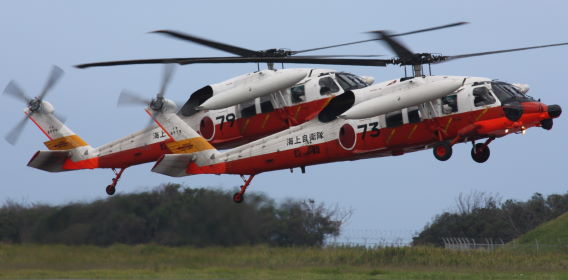 A pair of 73rd FAS UH-60Js come in for landing.
A pair of 73rd FAS UH-60Js come in for landing.
 Its exercise over, 8973 is deluged by an automatic taxi-through rinsing system of the type installed at
Its exercise over, 8973 is deluged by an automatic taxi-through rinsing system of the type installed at
all JMSDF air bases. This process is essential to prevent corrosion on aircraft that are operated in
salt air environments. Rather than a solid stream of fresh water, a soft spray pattern is used to
remove salt and water-soluble contaminants while avoiding damage to fragile
equipment such as pitot tubes or causing water intrusion.
Also like its sister unit, the 73rd fell victim to the organizational change that came into effect in April 2018, being reduced to SAR flight status (as the 213th Flight) on April 2, 2018, as an integral part of the 21st FAS.
(Operational for just four years, the 213th Flight disbanded on April 1, 2022.)
 A 73rd FAS UH-60J leads a 21st FAS SH-60K during the first flight training of the
A 73rd FAS UH-60J leads a 21st FAS SH-60K during the first flight training of the
New Year from Tateyama, January 2016. (Photo: JMSDF/21st Air Wing)
As the following episodes testify, the 73rd’s Iwo To Detachment not surprisingly had to maintain a high state of readiness in the run-up to the reorganization.
Jan. 9, 2018 Works in concert with JASDF UH-60J crew in conducting airlift from Chichijima (in Ogasawara Islands) to Iwo To, from where patient is flown to Atsugi by P-1
Jan. 20, 2018 Patient airlift from Chichijima to Iwo To
Jan. 24, 2018 In accordance with Japan Coast Guard request, airlifts patient from ship lying 260km northwest of Iwo To
Feb. 6, 2018 At the behest of the Tokyo Governor, Iwo To Detachment crew works with JASDF UH-60J crew in conducting airlift of patient from Chichijima to Iwo To
Feb. 14, 2018 A repeat of the February 6 operation
Mar. 10, 2018 At request of Japan Coast Guard, UH-60J sent to airlift ashore sick crew member from ship lying just off coast of Iwo To
Mar. 26, 2018 Twice in one day, the 73rd again called upon to work in concert with JASDF UH-60J crew in conducting an airlift this time from Hahajima in the Ogasawara Islands to Iwo To, from where patient is flown to Atsugi by P-1
In the 10 years of its existence, the 73rd had been deployed 476 times on rescue or disaster relief flights and saved 790 lives.
Some good video footage of the 73rd FAS flight demonstrations at Tateyama in October 2011 and July 2016 can be found here (link) and here (link), respectively.
 JMSDF, U.S. Navy and civilian medical personnel bring a “casualty” to a waiting 73rd FAS UH-60J
JMSDF, U.S. Navy and civilian medical personnel bring a “casualty” to a waiting 73rd FAS UH-60J
during a bilateral mass casualty drill at U.S. Fleet Activities Yokosuka, Kanagawa Prefecture.
(Photo [July 2012]: U.S. Navy/Mass Communication Specialist Seaman Mackenzie P. Adams)
 (Photo taken at Tateyama, October 2013)
(Photo taken at Tateyama, October 2013)
|
81st FAS |
Formed | Mar. 30, 1983 (31st FAW, Iwakuni, UP-2J) |
| Current Base | Iwakuni (31st FAW, EP-3/OP-3C [811th Flight] and UP-3D/U-36A [812th Flight]) |
At the time of its formation as the first JMSDF unit to operate aircraft in the electronic warfare support role, the 81st FAS was equipped with three UP-2Js that had been transferred from the 51st FAS. The fourth and final P-2J converted to the utility standard arrived the following year.
 Converted to UP-2J 9161, the former P-2J 4717 had been delivered back to service with the 51st FAS
Converted to UP-2J 9161, the former P-2J 4717 had been delivered back to service with the 51st FAS
in 1979. The aircraft is seen here five months into its career with the 81st FAS. Of particular note is
the dayglow BQM-34 Firebee target drone, which sports a tally of 10 parachute recovery markings.
(Photo [Iwakuni, August 1983]: Akira Watanabe)
The role its specially converted aircraft have fulfilled ever since is primarily in support of the anti-aircraft and electronic countermeasures (ECM) training of aircraft and ship crews, be they on individual training missions or on exercise. Each of the three UP-2Js was completed to a different equipment configuration: to carry BQM-34 Firebee unmanned target drones; to create a simulated electronic combat environment for electronic training; and for the gathering of electronic intelligence data.
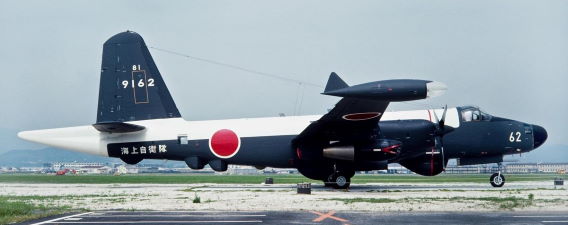 The P-2J 4719 was chosen for the second UP-2J conversion, 9612. Like 9161, this aircraft was
The P-2J 4719 was chosen for the second UP-2J conversion, 9612. Like 9161, this aircraft was
distinguishable by its solid nose and three under-fuselage fairings.
(Photo [Iwakuni, August 1983]: Akira Watanabe)
 In the case of UP-2J 9164 (formerly P-2J 4763), however, the nose glazing was retained, as it was
In the case of UP-2J 9164 (formerly P-2J 4763), however, the nose glazing was retained, as it was
on 9163 (ex-4757 [link]). (Photo [Iwakuni, May 1988]: Takao Kadokami)
The JMSDF’s first jet aircraft came in the form of the U-36A, based on the Gates LearJet Model 36A business jet, the first of which entered squadron service on April 21, 1988, having been delivered after conversion at ShinMaywa’s Tokushima plant in March 1987.
 The first JMSDF U-36A photographed in the month after its entry into service.
The first JMSDF U-36A photographed in the month after its entry into service.
As per the unit’s standard practice, the only squadron marking is the 81 on the tail.
(Photo [Iwakuni, May 1988]: Takao Kadokami)
Designed to work as a team, these aircraft feature a ventral radome housing an HPS-103-(1) weather/search radar. Underwing pylons carry XLQ-2 ECM and AN/ALE-43 chaff dispenser pods or RM-30A towing equipment. Despite leaving a ground clearance of a mere 15 cms, the latter is used in conjunction with the ARS-1P low-altitude, high-speed sleeve target used to hone the skills of the crews on board the close-in weapons system (CWIS)-equipped vessels of the JMSDF. The U-36A’s enlarged starboard wingtip tank incorporates missile seeker simulation equipment in the forward section, that on the port side a low-light camera for use in carrying out, recording and assessing simulated anti-ship missile attacks.
Tragically, all five crew members lost their lives when U-36A 9203 struck the water off Shikoku during a low-level ECM exercise on February 28, 1991.
In an article about flight safety at Iwakuni posted on its website on August 18, 2017, The Chugoku Shimbun mentioned that a U-36A had overran the runway and fallen into a ditch, injuring its five occupants, that same month.
 Initially operated by the 202nd Air Training Squadron from January 1965 and withdrawn from use
Initially operated by the 202nd Air Training Squadron from January 1965 and withdrawn from use
when with the 31st FAS on May 29, 1991, B-65 6723 was assigned to the 81st FAS at the time
this photograph was taken at Iwakuni in May 1989. (Photo: Takao Kadokami)
At the end of 1991, an LC-90 was received, and the last B-65 assigned to the 81st (6725) retired the following March. After having been finally decommissioned on June 24, 1992, this aircraft was placed on display at Iwakuni, where it has remained to this day.
 An LC-90 was operated by the 81st FAS from late 1991 until the operations of all five of these
An LC-90 was operated by the 81st FAS from late 1991 until the operations of all five of these
aircraft were centralized with the 61st FAS at some stage in the mid-2000s.
(Photo: Japan Ministry of Defense/JMSDF)
 The first U-36A again, at the Atsugi open day held in May 2000.
The first U-36A again, at the Atsugi open day held in May 2000.
The replacement of the UP-2J fleet was initiated by the delivery of the first of five newly built EP-3s, for electronic intelligence data gathering, on November 22, 1991. The improvement in capability provided by the EP-3 was such that the UP-2Js could be decommissioned on December 13, 1991.
 Delivered in 1991, the first two EP-3s were followed by three more, in September of each of 1995,
Delivered in 1991, the first two EP-3s were followed by three more, in September of each of 1995,
1996 and 1999. Missions with these aircraft are normally carried out by 15-man crews.
(Below) The installations in the far background add some amusing clutter to the aircraft’s outline.
 (Photos: Japan Ministry of Defense/JMSDF)
(Photos: Japan Ministry of Defense/JMSDF)
The delivery of two UP-3Ds optimized for the electronic warfare role followed on March 1, 1999, after a year of flight testing. These primarily provide the jamming duties required during ship air defence training. A third UP-3D, the 107th and last Kawasaki-built Orion, was delivered on February 1, 2000, but the UP-3Ds and U-36As were transferred to the 91st FAS (see below) upon its formation in March 2001.
The 81st was assigned the first of its ultimately five OP-3Cs on March 15, 2002. First flown on September 19, 2000, this first conversion from a standard JMSDF P-3C had been delivered for testing on March 1, 2001. Serving in the image-gathering role, for which their equipment fit includes global positioning systems, sideways-looking airborne radar (SLAR) and long-range oblique photography (LOROP) camera systems, the OP-3C aircraft enable the editing of intelligence on board and the relaying of that intelligence via satellite communications to land- or ship-based locations..
 (Above) An early photo of the first OP-3C, the former P-3C 5043. The first and second aircraft were
(Above) An early photo of the first OP-3C, the former P-3C 5043. The first and second aircraft were
initially equipped with SLAR and LOROP sensors, respectively. The more recent photo below
shows the second aircraft sporting the now standard low-viz colour scheme and carrying a
LOROP sensor pod. These aircraft normally carry a crew of 10.
 (Photos: Japan Ministry of Defense/JMSDF)
(Photos: Japan Ministry of Defense/JMSDF)
81st Fleet Air Squadron Orions, Iwakuni, September 16, 2012
 The second OP-3C, 9132 had started life as the standard P-3C 5069.
The second OP-3C, 9132 had started life as the standard P-3C 5069.
 A close-up of the front fuselage of OP-3C 9132. The trend in recent years has been to not display the
A close-up of the front fuselage of OP-3C 9132. The trend in recent years has been to not display the
JMSDF’s special mission Orions so prominently at public events.
 Displaying its protuberances to good effect, EP-3 9172 comes to the end of its landing run.
Displaying its protuberances to good effect, EP-3 9172 comes to the end of its landing run.
2021 will mark the 30th anniversary of the delivery of the first two of this type.
The 81st was the surviving entity following its merger with the 91st FAS on October 1, 2020, the all-Orion 811th Flight being joined by the return after 19 years, of the UP-3Ds and U-36As that now make up its 812th Flight.
|
91st FAS |
Formed | Mar. 5, 2001 (31st FAW, Iwakuni, UP-3D/U-36A) |
| Disbanded | (Merged with 81st FAS Oct. 1, 2020) |
 (Photo: Japan Ministry of Defense/JMSDF)
(Photo: Japan Ministry of Defense/JMSDF)
Taking its aircraft from the 81st FAS, the 91st was equipped with three UP-3Ds and five U-36As upon its formation. An LC-90 operated by the 91st was reassigned to the 61st FAS in March 2005.
 (Above) The second of its type delivered, on March 9, 1999, 91st FAS UP-3D 9162 shows off the
(Above) The second of its type delivered, on March 9, 1999, 91st FAS UP-3D 9162 shows off the
fairings on its undersides. Having flown for the first time on November 7, 1997, its predecessor
(below) had been delivered a year earlier, on March 5, 1998.
 (Photos taken at Iwakuni, September 2012)
(Photos taken at Iwakuni, September 2012)
 The above photo shows the first UP-3D equipped with RM-30A reeling machine launchers for the
The above photo shows the first UP-3D equipped with RM-30A reeling machine launchers for the
target-towing role on its outboard underwing stations. At the Iwakuni open day in September 2012
(below), a ground crew gave a performance of the carefully choreographed procedures designed
to ensure that the RM-30A was safely and securely mounted on its pylon.
 (Photos: [top] Japan Ministry of Defense/JMSDF; [above] J-HangarSpace)
(Photos: [top] Japan Ministry of Defense/JMSDF; [above] J-HangarSpace)
 The two-tone scheme of white and grey the UP-3Ds had worn since their introduction eventaully
The two-tone scheme of white and grey the UP-3Ds had worn since their introduction eventaully
gave way to a low-visibility scheme. These aircraft normally carry a crew of eight.
(Photo: Japan Ministry of Defense/JMSDF)
A dark day in the annals of the 91st FAS occurred on May 21, 2003, all four crew members—pilots Lt (jg) Masanori Hasegawa (aged 27) and Ensign Katsuichi Miura (25), who were accompanied by Chief Petty Officer Gen Kawabe (52) and Petty Officer Third Class Takuto Honda (20)—losing their lives when their U-36A crashed on takeoff from Iwakuni. The accident happened when they and a US-1A crew were conducting ‘touch and go’ training, and the cause was identified as insufficient separation between the U-36A and the wake turbulence from the US-1A, which had taken off 28 seconds before them.
 The fifth of the six U-36As received by the JMSDF was on static display (and 9204 and 9206
The fifth of the six U-36As received by the JMSDF was on static display (and 9204 and 9206
present in a hangar) at Iwakuni in September 2012, during their time with the 91st FAS.
The disbandment of the 91st FAS, on October 1, 2020, sent the three UP-3Ds and four U-36As back from whence they had come to form the 81st FAS’s 812th Flight.
CONTINUED IN PART 3 . . .
Principal References (in Japanese unless otherwise stated)
Japan Self-Defense Force Squadron (Ikaros, September 1996)
Jieitai Kōkūki: All [Aircraft] Catalog, Kōkū Fan Illustrated No. 108
(Bunrindo, Autumn 1999)
S-2 Tracker, Famous Airplanes of the World (Blue Series) No. 67
(Bunrindo, Nov. 1975)
ShinMaywa PS-1/US-1, Famous Airplanes of the World (Blue Series) No. 81
(Bunrindo, Nov. 1977)
ShinMaywa US-1, Famous Airplanes of the World No. 140
(Bunrindo, 2010)
Watanabe, Akira, Japanese Air Arms 1952–1984, (self-published in English), 1984
Japanese aviation press, primarily various issues of Kōkū Fan
Japanese Wikipedia
Where applicable, websites of currently active JMSDF units and their bases
(All photographs on this website are copyright J-HangarSpace
unless otherwise stated.)
![]()


